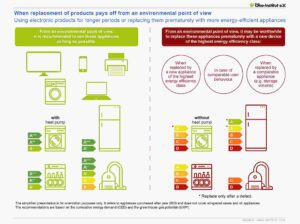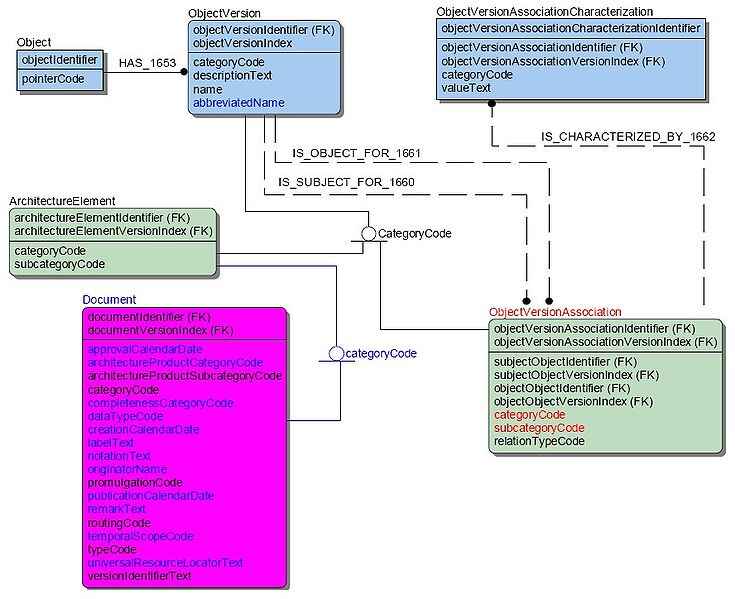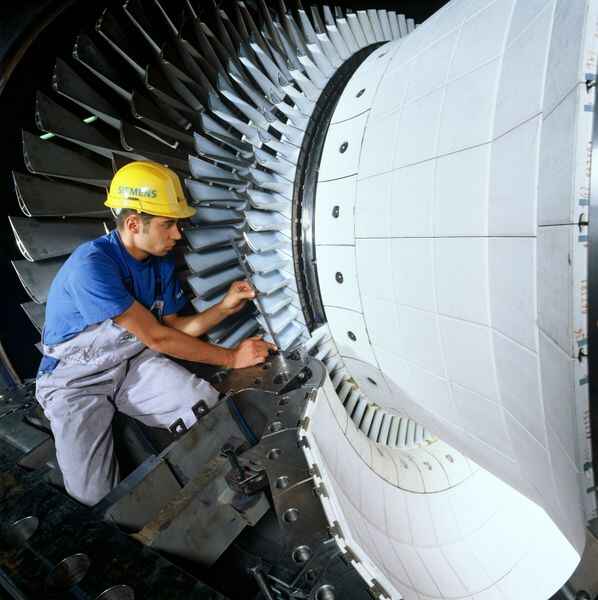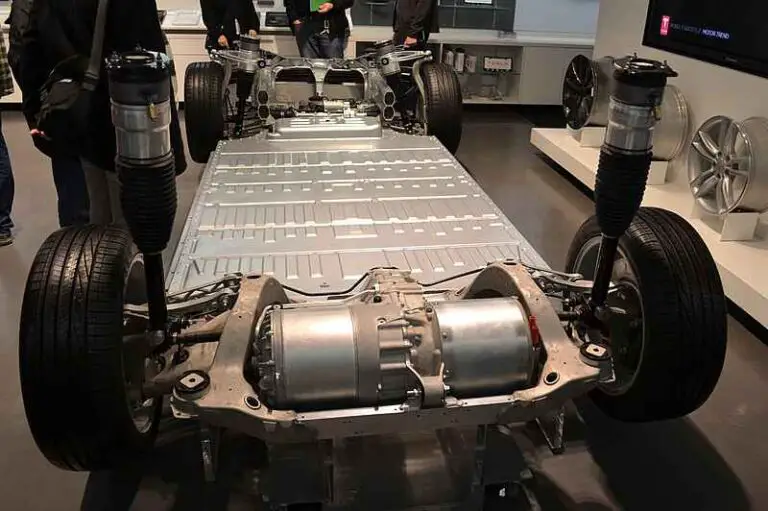Energy Efficiency Meaning, Contexts, and Applications Explained
Energy efficiency is a phenomenon whereby less energy is used to do more work.
This article discusses the basics of energy efficiency, with the following sections;
-Energy Efficiency and Sustainable Development
-Energy Efficiency and Renewable Energy
-Applications of Energy Efficiency
Meaning of Energy Efficiency
As the brief introduction above implies, energy efficiency is defined on the basis of energy input and work output.
In some definitions, energy efficiency is described as a method, or an act. The entire concept revolves around the idea of conserving energy. This implies that energy efficiency is itself a sub-concept of energy conservation.
However, whereas energy conservation seeks to minimize energy losses through a conscious and elaborate set of efforts, energy efficiency is generally dependent on the existence of enhanced technologies that are less energy-intensive than conventional ones.
With this said, energy efficiency is the conservation of energy, without decrease in work done. It involves reducing the required input while increasing or optimizing the output. In cases where the output (that is; the work done) is not increased, the input (energy consumed) is reduced all the same.
In physics, energy efficiency refers to the proportion of total energy input, which is used to do work, in a system or machine. It is usually expressed as a percentage, according to the following formula;
Energy Efficiency= (Energy used to do useful work/Total Energy Consumed) × 100
From the above paragraph, it can be said that the end goal of energy efficiency is to consume less energy. It is a two-sided goal, as this reduced consumption must be accompanied by unaffected, or increased, work output.
There are various contexts and fields in which energy efficiency is relevant and applicable. These are discussed further in this article.
Energy Efficiency and Sustainable Development
Sustainable development can be described as the act of achieving sustainability.
There are several, identified measures, which must be taken for sustainable development to be actualized, one of which involves energy efficiency.
The two concepts are related on an instrumental basis, because energy efficiency provides an avenue to reduce the rate of resource depletion on Earth, which is synonymous with the goal of sustainable development.
Energy efficiency is also applicable to the three pillars of sustainable development; which are economy, society and environment, as discussed in the following subsections;
-Energy Efficiency and Environment
Environmental implications of energy efficiency are perhaps the most significant.
It is well-known that energy generation, conversion and consumption, tend to affect the environment. This is especially the case for fossil fuels like petroleum and coal [3]. Greenhouse emissions have become a critical environmental concern, due to the resultant, adverse effects such as global warming and climate change.
Through energy efficient technologies and practices, the environmental impacts of power usage can be mitigated, without reducing the productivity of the society in terms of work done in various energy-dependent industries.
Other environmental problems caused by energy include air, water and soil pollution, by a broad range of toxic contaminants that include heavy metals, halogens, and organic compounds. These issues are mitigated by the practice of energy efficiency.
-Energy Efficiency and Economy
The relationship between energy efficiency and the economy is rather obvious.
When less energy is consumed, the associated cost of the energy is reduced as well. Given that most economies of the world depend on energy, any avenue that enables more work to be done with less energy (and less cost) will have a generally-positive impact on the economy, in terms of optimizing the productivity of commerce and industry.
It must also be recalled that energy efficiency is instrumental to achieving sustainable development [6]. Economic sustainability becomes more feasible when the difficulty and cost of work/production become less. Also, by reducing the demand on energy resources, inflation rates can be minimized.
-Energy Efficiency and Society
Impacts of energy (generation and consumption) on the society, are both positive and negative.
The growing relevance of energy to human survival means that energy efficiency itself affects the society. Directly, a large-scale implementation of energy efficiency practices will result in less-energy consumption at the community level. This does not imply that the quality of living will decline. Rather, where energy efficiency is in place, the reduced consumption of energy impacts the society in a positive way.
Health problems related to climate change and environmental pollution, will decline with the implementation of energy efficiency. Fossil fuel exploration, processing, production and consumption, will all reduce, improving the economic, social and environmental sectors of the society.
Energy Efficiency and Renewable Energy
Renewable energy technologies are not directly correlated with energy efficiency.
However, the development of renewable energy technology has played a role in the advancement of energy efficiency technology, and vice versa. Also, the goal of renewable energy development is similar to that of energy efficiency, in reducing the rate of fossil fuel consumption, and its associated problems.
Applications of Energy Efficiency
1). In Buildings
Buildings represent perhaps the most common scenario in which energy efficiency is applied.
In many modern buildings, the link between renewable energy and energy efficiency also becomes apparent. This is because buildings which are equipped with energy-efficient systems and appliances, often have renewable energy technologies installed as well.
The building sector is a major consumer of energy, and is responsible for a vast proportion of energy losses [4]. For this reason, the agenda of achieving energy efficiency, so far, has placed significant focus on the building sector.
Existing buildings can be made to undergo some changes to reduce the consumption of energy without reducing overall productivity. The basic change in most cases, has to do with the appliances used in the buildings.
Energy-efficient appliances are exemplified by LED light bulbs, which are a beneficial replacement of incandescent bulbs; as they consume much-less energy and are more productive [8]. Smart refrigerators are another example of these devices, alongside modern heaters and microwaves that are designed to be much more efficient than their earlier counterparts.
These energy-efficient appliances are similar to renewable technologies by reducing greenhouse emissions from fossil fuels. They also reduce the expenditure on energy in general.
Building design can aid in achieving energy efficiency. For example, energy-efficient window designs comprise of mechanisms and components that enable the building to retain heat, minimizing the consumption of energy by HVAC systems [1].

2). In Urban Planning
Population growth and industrialization are some of the causes of increased urbanization in our society.
Achieving energy efficiency at the community level must involve elaborate schemes that enable less energy to be consumed by residential, commercial and public infrastructure.
Urban regions are the highest consumers of energy, globally. By incorporating energy efficiency measures into the scheme of urban development, the sustainability of cities can be ensured.
3). In Automobiles
Energy efficiency in transport is determined by factors which include fuel consumption/energy input, load, and distance travelled.
With regards to cost and fuel consumption, battery electric vehicles and plug-in vehicles are among the most efficient, recent developments.
Efforts to achieve energy efficiency in transport present an elaborate and crucial issue, because the transport sector is known to yield a vast percentage of greenhouse emissions (about 23 percent), while consuming up to 19 percent of global energy [5].
4). In Power Plants
In power plants, the main application of energy efficiency is in auditing
This involves the estimation of (maximum possible) energy demand. Energy supply and service companies generally utilize the knowledge of energy efficiency to carry out in-depth and accurate auditing [2], based on data derived from metering tools.
Another measure that ensured energy efficiency in power plants, is the waste-to-energy approach. This approach provides and avenue that allows heat excesses from power plants to be used, rather than lost.
A good example of the implementation of this method is combined heat and power systems which capture energy excesses from conventional power plants, and use them for heating and cooling purposes [7].
5). In Manufacturing
The application of energy efficiency in manufacturing falls under the broader category of building applications, since manufacturing is generally conducted within ‘buildings’.
However, the manufacturing industry uses energy mainly for production, and this differs from several other niches under the building category, which may use energy mainly for communication, media handling, and domestic purposes.
Through energy-efficient methods and technologies, the cost of production is reduced [9]. Some energy-efficient practices in the manufacturing industry include sub-metering which tracks energy consumption, and provides a guide by which losses can be minimized.
Conclusion
Energy efficiency refers to the phenomenon, and practice, of doing more work with less energy.
This concept is related to energy conservation, as one of the factors to be considered in order to conserve energy.
Energy efficiency is also relevant to the theme of sustainable development. It has a role to play in ensuring that the environment is protected from pollution, greenhouse emissions, global warming and climate change. This is because, by using less energy to do work, the demand for fossil fuels will reduce, alongside the pollutants formed in the process of extracting, refining, and burning these fuels.
Economically, energy efficiency implies that less energy cost will be amassed. At both the individual and community levels, this has significant, potential benefits for the economy, as it will enable more resources to be invested into other sectors of commerce and industry.
The social implications of energy efficiency are part of the sustainable development scheme. Mainly, poverty rates and unemployment may be reduced by energy-efficient practices and technologies. This s because the energy-intensive nature of work will be minimized, allowing more productivity to be possible in all sectors.
Health problems like bronchitis and heat stroke, which are said to be associated with fossil fuel combustion and climate change, also stand the chance of becoming less-prevalent as a result of energy efficiency measures.
A subtle relationship exists between energy efficiency and renewable energy. This relationship is hinged on the pace of development of the two fields. It is apparent, that efforts to achieve energy efficiency in power plants and machines, are encouraged by the advancements in renewable technology, and vice versa.
Applications of energy efficiency, cut across all sectors of the modern society. In buildings, the integration of energy-efficient technologies, takes the form of appliances, metering systems, and electricity-generators, which are all designed to use less energy without reducing their work-output.
This scheme extends to the manufacturing sector, where the implementation of energy efficiency results in a greater level of productivity at less cost.
In transport, electric and hybrid vehicles represent a shift toward energy-efficient automobiles, which accompanies the efforts to limit the use of fossil fuels, so as to conserve the environment and its resources.
Finally, power plants (which represent the most important component of the energy supply chain) also integrate energy efficiency into their designs and operations. An example of this is the use of combined heat and power systems to recycle energy excesses from conventional power plants, which is used for heating and cooling purposes. In all these applications, the end goal is energy conservation without a decline in productivity.
References
1). Cappuccio, G. (2021). “Energy-efficient windows: cost, options, and how much they’ll save you on electricity.” Available at: https://roofingcalculator.com/news/all-about-energy-efficient-windows. (Accessed 14 February 2022).
2). Chisale, S. W.; Mangani, P. (2021). “Energy Audit and Feasibility of Solar PV Energy System: Case of a Commercial Building”, Journal of Energy, vol. 2021, Article ID 5544664, 9 pages, Available at: https://doi.org/10.1155/2021/5544664. (Accessed 14 February 2022).
3). Denchak, M. (2018). “Fossil Fuels: The Dirty Facts.” Available at: https://www.nrdc.org/stories/fossil-fuels-dirty-facts. (Accessed 14 February 2022).
4). EIA (2022). “Buildings: A source of enormous untapped efficiency potential.” Available at: https://www.iea.org/topics/buildings. (Accessed 14 February 2022).
5). EPA (2021). “Sources of Greenhouse Gas Emissions.” Available at: https://www.epa.gov/ghgemissions/sources-greenhouse-gas-emissions. (Accessed 14 February 2022).
6). Ganda, F.; and Ngwakwe, C. C. (2014). Role of energy efficiency on sustainable development. Environmental Economics, 5(1).
7). Gregus, N. (2021). “Everything You Need to Know About Combined Heat and Power (CHP) Units.” Available at: https://goenergylink.com/blog/combined-heat-and-power/. (Accessed 14 February 2022).
8). Janeway, K. (2015). “How an LED Uses So Much Less Energy.” Available at: https://www.consumerreports.org/lightbulbs/why-an-led-uses-so-little-energy-/. (Accessed 14 February 2022).
9). Lagas, B. (2017). “7 Tips to Reduce Energy Costs.” Available at: https://www.nist.gov/blogs/manufacturing-innovation-blog/7-tips-reduce-energy-costs. (Accessed.14 February 2022).


